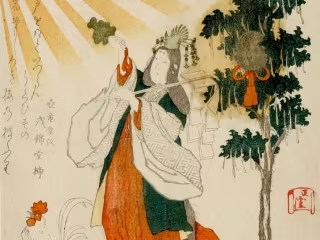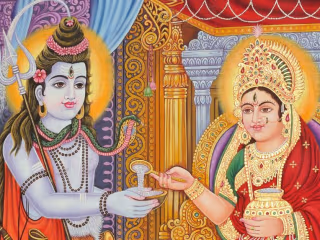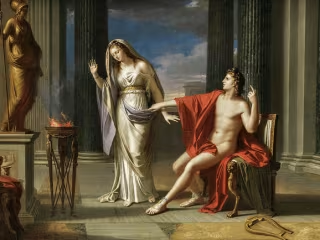Bona Dea: The Goddess of Healing and Fertility
0
Ghostwriter
Blog Writer

Bona Dea occupied a unique and enigmatic realm within the extensive and intricate pantheon of ancient Roman deities, thus earning her unparalleled reverence. Often referred to as “the Good Goddess,” Bona Dea’s presence in Roman mythology was characterized by an aura of mystery and intrigue. Her identity, shrouded in secrecy, added to her allure, making her one of the most captivating figures in Roman religion and folklore. The name “Bona Dea” carries profound meaning, signifying her intrinsic goodness and her role as a guardian of sacred virtues. Unlike many other Roman deities whose stories and attributes were widely known, Bona Dea remained hidden from the public eye; her true name was never uttered beyond the inner sanctum of her cult.
Overview of Bona Dea
Good Goddess encapsulates the very essence of Bona Dea, emphasizing her benevolence and virtue. Her title is an unequivocal declaration of her inherent goodness, with “Bona” meaning “good” in Latin and “Dea” signifying “goddess (“Bona Dea | Facts, Information, and Mythology”).” Despite her positive attributes, Bona Dea’s true identity remains in mystery, with her actual name safeguarded within the confines of her exclusive cult. Hailed as “the Chaste Goddess” in Roman society, underscoring her embodiment of purity and moral integrity, Bona Dea’s role extended beyond mere myth, deeply intertwined with the daily lives of Roman women. Her cult, an exclusive domain of women, offered a unique sanctuary for spiritual connection and worship (“The Cult of Bona Dea”).
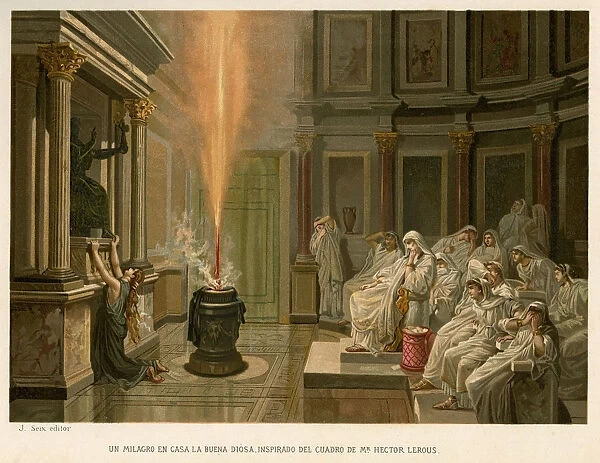
Source: Mary Evans Prints Online
Titles
The Good Goddess
The Chaste Goddess
Goddess of Fertility
Protector of Women
Abilities
Bona Dea possessed a preeminent ability in the realm of fertility, a power of immense significance in the lives of Roman women. She was believed to have the extraordinary capability to bestow fertility and assist in childbirth, rendering her a vital figure for women earnestly seeking to conceive and ensure the continuity of their families (“Bona Dea | Facts, Information, and Mythology”). Furthermore, Bona Dea’s influence extended to healing, where she was regarded as a divine source of solace and remedy. She was closely associated with medicinal properties and believed to be able to cure many ailments. Her presence offered comfort to the sick, infusing hope and relief into the lives of those who sought her intervention in times of illness and distress (“Bona Dea”).
In addition to her roles as a bestower of fertility and a healer, Bona Dea was also intricately linked to divination, adding an element of mysticism to her character. Her cult involved specific practices aimed at seeking her guidance and foresight. These rituals were conducted to unravel the mysteries of the future and gain insight into the paths ahead, further solidifying her significance in Roman culture’s spiritual and mystical realms.
Characteristics
It is worth noting that while no detailed physical description of Bona Dea exists in historical records, her representation in art and iconography was marked by a common theme – that of an enigmatic, veiled woman. This depiction emphasized her inscrutability and the secrecy that enshrouded her cult. The symbolism of her veiled countenance signified her exclusive connection to women and underscored the notion that her true essence and the secrets of her cult were reserved solely for the initiated female worshippers. Bona Dea was a goddess who existed in modesty, purity, and reverence, enhancing her aura of mystery and sanctity (“Bona Dea | Facts, Information, and Mythology”).
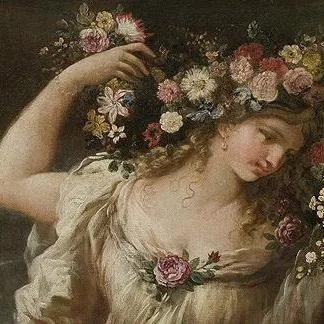
Source: La Bona Dea's Journal of Everyday Magic
Traits
Bona Dea’s character exuded an unmistakable aura of compassion, nurturance, and benevolence that deeply resonated with women in ancient Rome. Her cult members held her in the highest regard, primarily owing to her steadfast commitment to safeguarding women’s well-being and moral integrity (“The Cult of Bona Dea”). The goddess’s compassionate nature was a source of solace for countless Roman women who turned to Bona Dea for comfort and support during hardship and distress. Her nurturing presence instilled a sense of security and assurance, reinforcing her role as a guardian of women’s welfare.
Moreover, Bona Dea’s unwavering dedication to upholding moral uprightness was a cornerstone of her character. Roman women revered her not only for her divine powers but also for her embodiment of virtuous values. Her commitment to promoting ethical conduct and maintaining the sanctity of her cult endeared her to her worshippers, cementing her status as a beloved and respected figure within the Roman religious landscape (“The Cult of Bona Dea”).
Symbols
The Good Goddess was often associated with powerful symbols that spoke to her role as a healer and nurturer. Among these symbols, the serpent held particular significance, as it represented healing and wisdom. Serpents were frequently intertwined with Bona Dea’s imagery (“Bona Dea”), emphasizing her ability to bring solace and enlightenment to those in need. Another symbolic representation of this goddess was the cornucopia, a symbol of abundance and fertility (“Bona Dea | Facts, Information, and Mythology”). This iconography underscored her influence in matters related to prosperity and the earth’s bounty, further highlighting her role as a powerful deity who promoted the well-being and fertility of her worshippers.

Source: Flickr
Festivals and Rituals
The cult of Bona Dea was an exclusive domain, reserved solely for women, and distinguished by a collection of unique festivals and rituals that played a vital role in Roman society. One of the most significant of these rituals was the “Lupercalia,” celebrated in December, during which women gathered within the house of the Roman magistrate or priest responsible for overseeing the cult (“Bona Dea | Facts, Information, and Mythology”). These ceremonies involved the making of offerings, singing of hymns, and the sharing of secret teachings related to the goddess among the initiated women, further shrouding Bona Dea’s cult in an aura of mystery and exclusivity (“Bona Dea”).
Another notable celebration was the “May Festival,” or “Matronalia,” held in May, marked by joyous feasting and the exchange of gifts among women. This festival served as a collective homage to Bona Dea, acknowledging her as a guardian of women’s well-being and shared bonds (“Wikiwand – Bona Dea”). These festivities provided a unique and essential opportunity for women to unite, seek the blessings of Bona Dea, and reinforce their sense of community, emphasizing the goddess’s role as a unifying and protective force in the lives of Roman women (“The Cult of Bona Dea”).
In essence, the cult of Bona Dea offered a sacred space for women to connect, celebrate, and seek the blessings of a goddess who held a unique and revered place in their lives. The rituals and festivals associated with Bona Dea reinforced the sense of community among women while perpetuating the mystery and exclusivity that characterized her cult in the rich tapestry of Roman religious tradition.
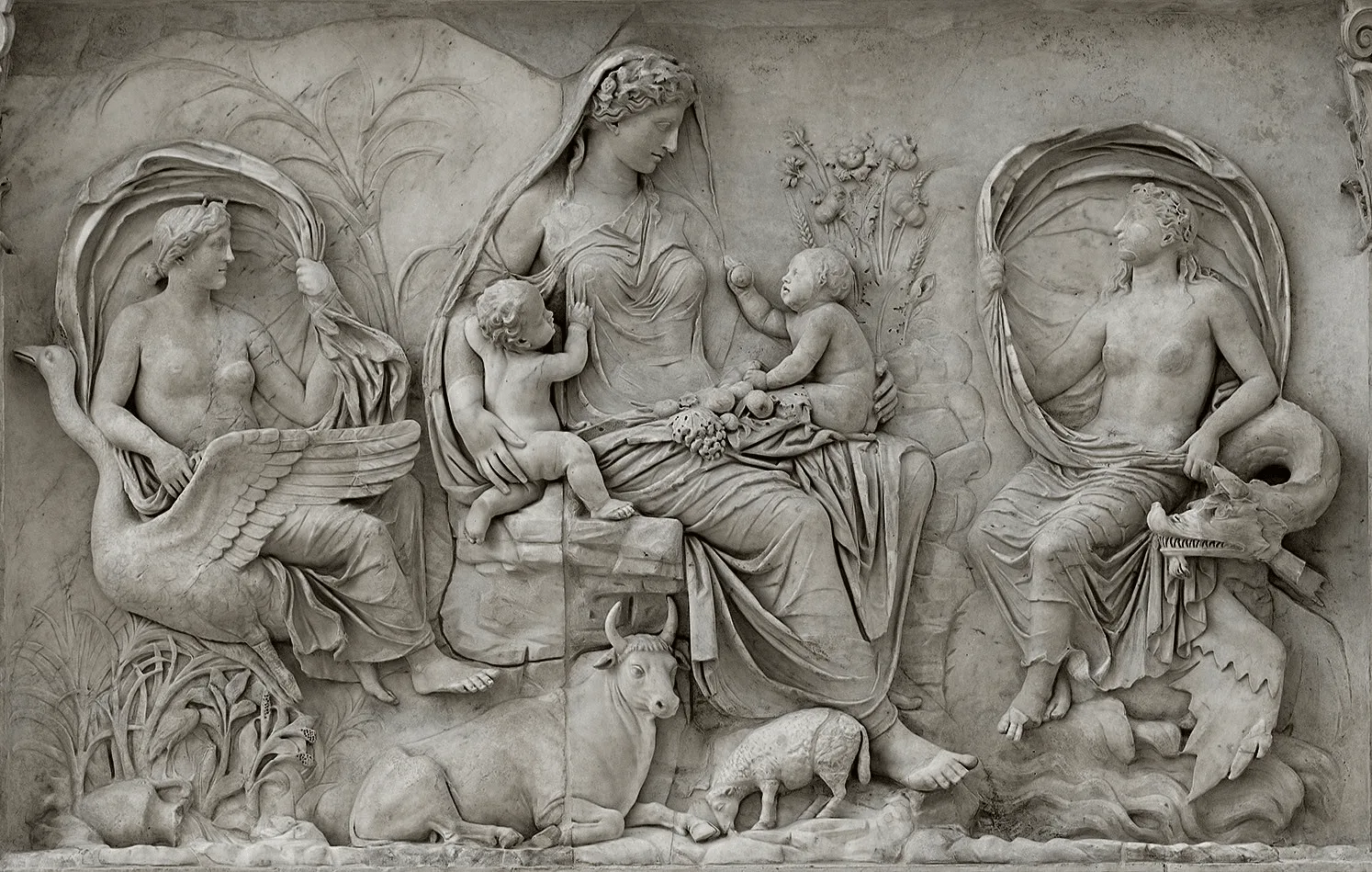
Source: Italian Art Society
Legends associated with Bona Dea
The Roman goddess Bona Dea, known as “the Good Goddess,” remains a source of fascination due to her enigmatic nature and complex symbolism. This section delves into the myths surrounding Bona Dea, offering insights into her origins and other compelling stories contributing to her legendary persona.
Origin story
The origin story of Bona Dea, or lack thereof, adds a layer of mystique to her already enigmatic persona. Bona Dea remains an exception in Roman mythology’s history, where the birth and lineage of deities were often meticulously chronicled. Unfortunately, no widely acknowledged or definitive account narrates the circumstances of her birth or creation. Instead, her existence remains veiled in obscurity, mirroring the secrecy that cloaked her cult and identity.
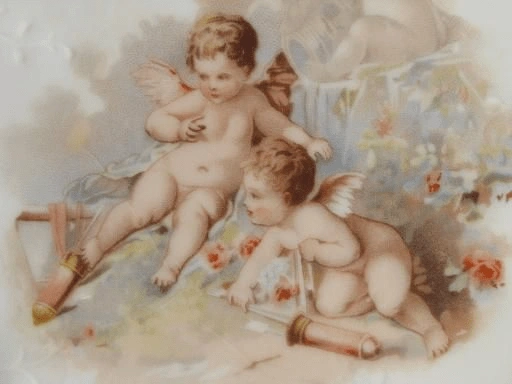
Source: United Church of God
The Benevolent and Nurturing Nature of Bona Dea: A Beacon of Hope for the Ailing and Vulnerable
In Roman mythology, Bona Dea was revered for her exceptional ability to alleviate ailments and comfort those in need. As the Good Goddess, she was believed to materialize as a celestial entity, gracing the dreams of the ailing and vulnerable and providing divine guidance on remedies and therapeutic practices. While the origins of this legend lack a definitive source, its thematic resonance endures, illuminating Bona Dea’s benevolent and nurturing nature.
This legendary portrayal underscores her pivotal role as a source of assistance and well-being in Roman society, where afflictions and maladies were frequently met with desperation and uncertainty. Bona Dea transcends mere myth in this narrative, becoming an emblem of hope and respite, a celestial beacon for those in physical and emotional distress (“Bona Dea”). Despite the absence of a specific source, the legend reaffirms the goddess’s significance as a healer and guardian, perpetuating her status as a revered and cherished figure within the pantheon of Roman deities.
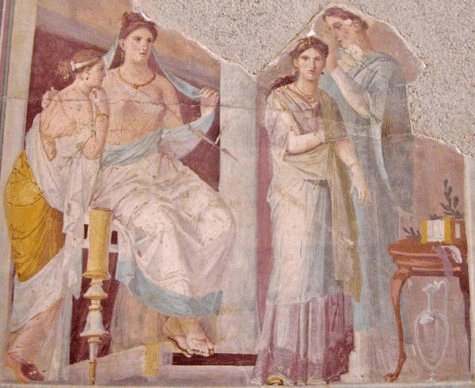
Source: Today in History
The Empowering Essence of Bona Dea: A Guardian of Women
Bona Dea, known as the Goddess of Fertility and the Protector of Women, is significant in Roman mythology. She is renowned as a steadfast guardian of women, particularly during crucial junctures, such as childbirth. It is widely believed that Bona Dea assumed the role of a guiding presence, extending her divine mantle as a protective shield over women during their moments of vulnerability and transition. Although no singular source offers a comprehensive account of this particular legend, its resonant echoes persist in the collective memory of Roman society, underscoring the indelible imprint of Bona Dea’s paramount importance in women’s lives.
Through this narrative, Bona Dea embodies empowerment and unwavering support during a woman’s most delicate and significant phases of life. Her divine presence is a source of strength, fortitude, and assurance, guiding women through the profound experiences of childbirth and other pivotal life events (“Bona Dea | Facts, Information, and Mythology”). Although the tale may not be recounted in explicit detail, its enduring essence emphasizes Bona Dea’s unwavering role as a guardian of women, firmly establishing her as a revered and cherished figure in Roman women’s hearts and minds throughout the ages.
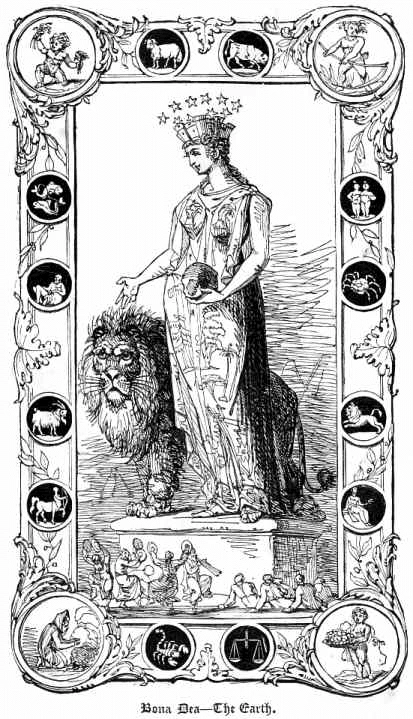
Source: Brooklyn Museum
Influences of other religions/cultures on Bona Dea
While distinctly Roman, the intersection of cultural influences in Bona Dea’s mythic character bears subtle marks of external sources that shaped her persona. Greek mythology, in particular, emerges as a potential source of inspiration, offering a glimpse into how foreign traditions may have influenced Bona Dea’s roles as a healer and protector. The Greek goddess Hygieia, celebrated as the embodiment of good health and cleanliness, takes center stage in this exploration. The thematic resonances between Bona Dea’s attributes and Hygieia’s qualities invite speculation about potential cross-cultural exchanges that shaped their mythic identities (“Bona Dea | Facts, Information, and Mythology”). While no specific source explicitly narrates the fusion of these two figures, the dynamic nature of ancient mythologies suggests that deities often evolved through the intermingling of diverse traditions. In light of this, the contours of Bona Dea’s character add depth to the intricate interplay of cultural exchanges that shaped her mythic persona.
Modern appearances
The persistence of Bona Dea’s legacy is a subtle but perceptible undercurrent in contemporary cultural and academic realms. While the fervent worship once directed toward her has waned, and her temples have become relics of history, her enduring presence is palpable. Scholars and enthusiasts of ancient religions continue to study and contemplate her enigmatic and mysterious tales, examining her role as a healer, protector, and symbol of feminine strength within the broader context of Roman mythology.
In modern literature, art, and scholarly discussions of antiquity, occasional references to Bona Dea can be unearthed as reminders of the enduring impact of ancient goddesses on human culture and imagination. In the interplay between past and present, Bona Dea’s legacy endures as an ever-flickering flame that illuminates the rich tapestry of Roman mythology and the timeless fascination with the enigmatic divine.
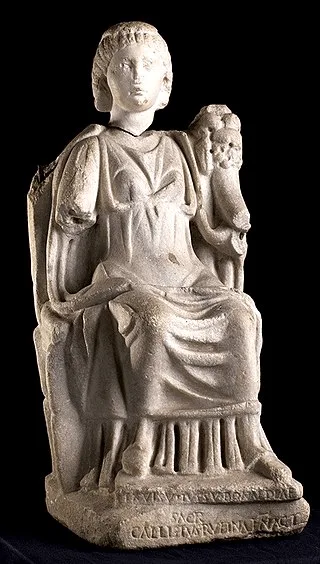
Source: Wikipedia
Final thoughts
Bona Dea, the enigmatic and compelling figure of Roman mythology, remains shrouded in mystery. Her legends reveal her multifaceted roles as a healer, protector, and symbol of feminine strength. The influence of distant cultures further heightens the complexity of her mythic persona. Although her temples may have crumbled, her legacy lives on as a testament to the enduring power of ancient goddesses in shaping beliefs, cultures, and imaginations. In Bona Dea’s aura of benevolence, secrecy, and reverence, we are reminded of her timeless presence within the intricate tapestry of Roman mythology.
References
“Bona Dea.” Wikipedia, 29 July 2023, en.wikipedia.org/wiki/Bona_Dea. Accessed 4 Sept. 2023.
“Bona Dea | Facts, Information, and Mythology.” Pantheon.org, pantheon.org/articles/b/bona_dea.html. Accessed 4 Sept. 2023.
“The Cult of Bona Dea.” Women in Antiquity, Women in Antiquity, 27 Nov. 2018, womeninantiquity.wordpress.com/2018/11/27/the-cult-of-bona-dea/.
“Wikiwand – Bona Dea.” Wikiwand, www.wikiwand.com/en/Bona_Dea. Accessed 4 Sept. 2023.
Did we miss something? Do you know another aspect of this legend? Don't hesitate to reach out!
Like this project
0
A client hired me to write several informative pieces on Roman Goddesses, and this blog post centers around the Goddess of Healing and Fertility, Bona Dea.
Likes
0
Views
316
Tags
Ghostwriter
Blog Writer


